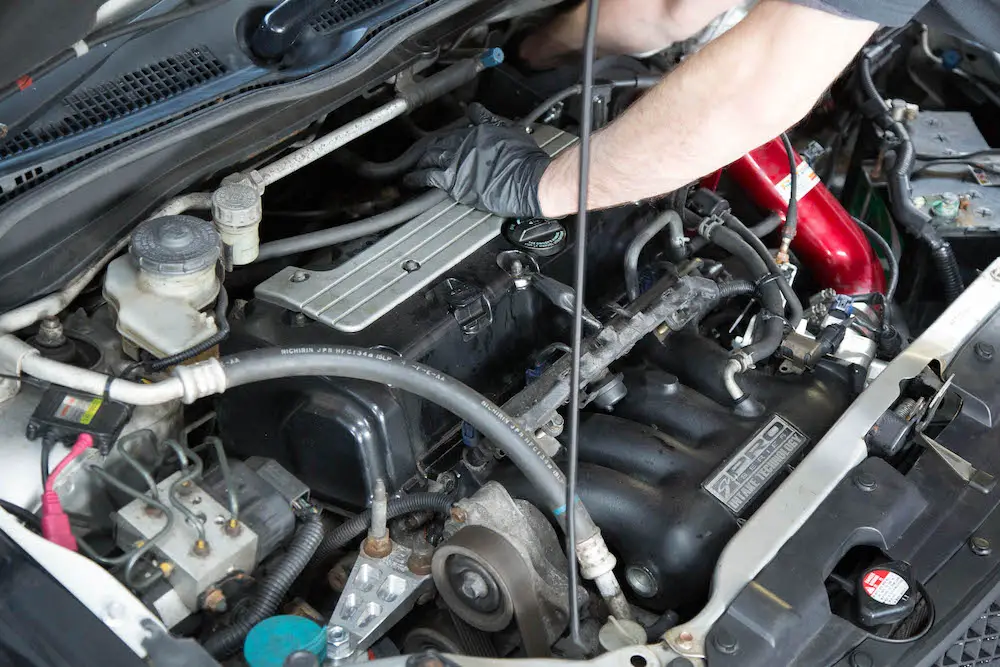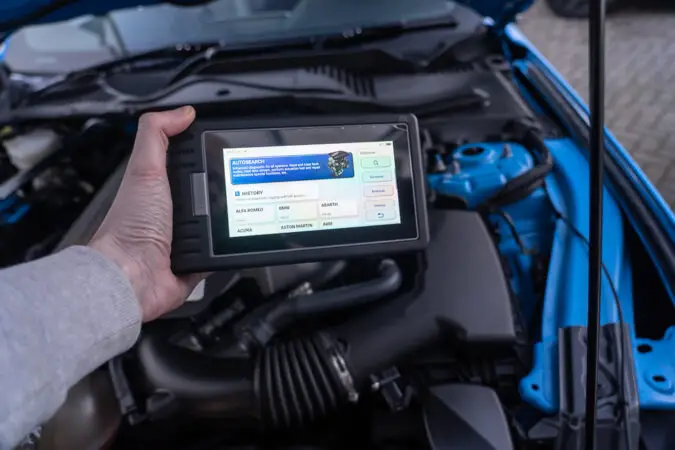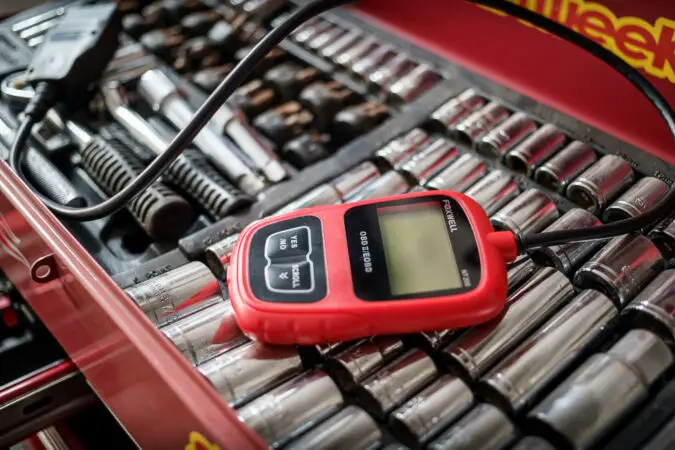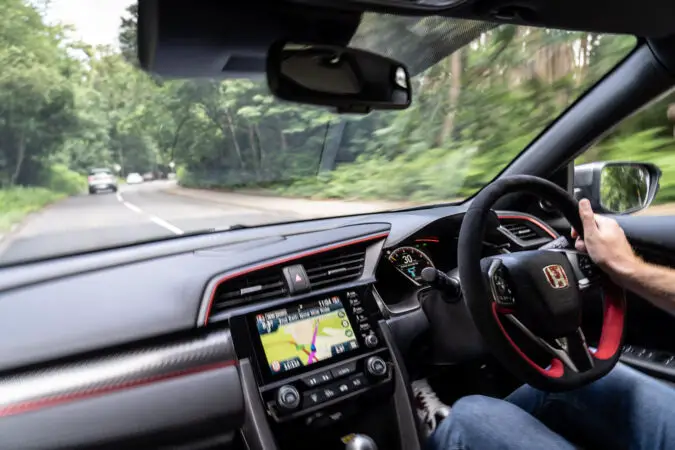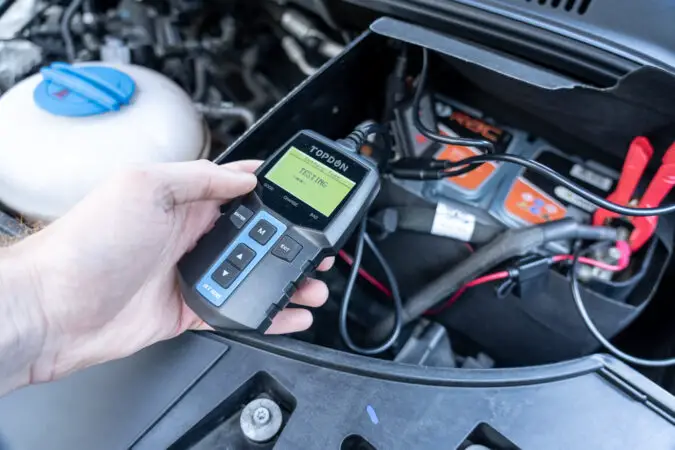The inner workings of modern cars these days are reliant on a vast network of sensors and electronics dotted about. While we can sometimes chide how these sensors often break, or how they’d add such a heavy dose of complexity to repairs, we can’t argue against their benefits. They’ve made cars so much more efficient, less polluting, and powerful. Yet, there are issues such as a P0106 error code that we dread.
If you’re sensing that your car isn’t working right, the first step towards diagnosis would be to plug in an OBD diagnostics tool. But what if you’re getting a P0106 error code, and what does it mean? The accompanying warning message might say, “Manifold Air Pressure (MAP) Barometric Pressure Sensor Electric Circuit Output Range and Performance Problem”. A lengthy explainer, so how does this work?
Quite simply, it may denote that your car’s MAP sensor, or its electrical circuitry and voltage readings, have gone awry. This is crucial, especially for fuel-injected vehicles. By measuring the air pressure at your intakes, the MAP sensor can best optimize your engine’s power and performance. Meanwhile, it’s also able to help maximize fuel economy. So, what should you do when a P0106 error code appears?
How Does A P0106 Error Code Relate To The MAP Sensor?
First, let’s take a peek at what a P0106 error code is related to, in the first place. As we mentioned, it’s tied to your car’s MAP sensor, or ‘manifold absolute pressure’. It’s one of the many sensors that gauge and monitor your engine’s operation. In particular, engines that feature fuel injection, which account for almost every vehicle sold today. The MAP sensor can be found mounted in the intake manifold.
What it does, is continuously measure the amount of air that’s flowing into the engine, through your intake manifolds. In doing so, the MAP sensor is connected to your car’s central computer brain, also known as an ECU. Data collected by the MAP sensor concerning air pressure, air density, and the flow rate of the air will be passed onto the ECU for proper analysis. It’ll then start crunching airflow data.
With the ECU now aware of how air is rushing into the engine, it could make appropriate adjustments of how much fuel to pump into the engine for an optimal air-to-fuel ratio. And, it may also influence the engine’s ignition timing, either to advance (ignite faster) or retard (ignited slower) than necessary. In its measurements, the ECU will correlate input from the MAP sensor with the engine speed (RPM).
You shouldn’t confuse the MAP sensor with a MAF (mass airflow) sensor. Both perform similar duties, whereby they’d be able to measure the amount of air entering it. Usually, engines use a MAF sensor, located in front of the throttle bodies. Meanwhile, a MAP sensor is found on the intake manifold, or at times, behind the throttle bodies. Turbocharged engines, however, may feature both a MAP and MAF sensor.
How About Between P0106 And The Barometric Pressure Sensor?
Another component that a P0106 error code might otherwise make mentions of is the BAP sensor. Or, the ‘barometric air pressure’. In most areas, the BAP sensor and the MAP sensor have roughly similar functionality. Whereas the MAP sensor calculates absolute pressure, your car’s BAP sensor measures barometric pressure. This relates to the atmosphere of the air that your car is driving through.
For example, the barometric air pressure can be quite different depending on where you’re driving. A drive through most roads at sea level wouldn’t incur penalties. Nevertheless, imagine if you’re driving on a mountain pass, thousands of feet above sea level? With differences in barometric pressure of the air around you, the BAP can gauge this, and pass on the relevant data back to your car’s ECU.
The ECU will now be able to keep informed of how dense or thin the atmosphere is. Once again, data from the BAP sensor will help the ECU to make adjustments to how much fuel to pump in, as well as the ignition timing. At higher altitudes, there will be far less oxygen that the engine could rely on for combustion. In this scenario, it would require a differing volume of fuel to be pumped into the engine.
Therefore, the BAP sensor (combined with the MAP sensor) can best optimize your engine’s power and efficiency. With a precise injection of fuel into the engine, it could eke out as much power as possible. Unlike the MAP sensor, the BAP sensor (sometimes known as the BARO sensor) is mounted on the rear firewall in the engine bay. Or, it’s sometimes tucked inside of the fenders, near the wheel arches.
What Does It Mean When You Have A P0106 Error Code?
A P0106 OBD error code could be defined as “Manifold Air Pressure (MAP) Barometric Pressure Sensor Electric Circuit Output Range and Performance Problem”. If you see this P0106 error code appear, that means the car’s ECU (or depending on the vehicle, the PCM, or ‘powertrain control module’) detects a faulty or erratic reading with the MAP or BAP (BARO) sensor. There is always a defined threshold.
MAP sensors should relay back a signal to the ECU with an air pressure reading between 1 to 4.5 volts. However, if the pressure readings fluctuate rapidly, or if the reading is far below or above this limit for a long time, it’ll trigger a P0106 error code. At idle, the air pressure data (measured in voltage) should be around 1.5 volts. At higher speeds, with a ‘wide open throttle’ (WOT), this rises to around 4.5 volts.
There are a myriad of reasons why your car detected a P0106 error code. In other words, a faulty MAP or BAP (BARO) sensor. These can include…
What Causes Your ECU To Throw A P0106 Error Code?
- Cracking – The sensors have to be mounted precisely, and with tight tolerances for them to function properly. Unfortunately, the clamps on the intake hose leading to the sensors can crack and fail, thus preventing the sensors to read airflow accurately.
- Clogging – These sensors are sensitive when it comes to contaminants. As they’re measuring airflow, the hoses or inlets supplying air to the sensors might become clogged with debris. Or, these hoses (or inlets) might also sprout air leaks and cracks, causing the sensor to read erroneously.
- Contamination – Besides clogging, direct contact with dirt or water might prompt the MAP and BAP sensors to fail prematurely. These can concentrate near the connectors of the sensors, causing some shorting or accelerating wear.
- Vibrations – Shaking and vibrations from the engine or vehicle might be enough to knock off or loosen the connectors for the sensors. Alternatively, the constant shuddering might damage the housing or fragile electrical circuitry inside.
- Heat – Given how close the MAP and BARO sensors are to the engine, they’re exposed to a lot of heat. In time, and with enough exposure, heat could sometimes melt the connectors or housing, causing cracks to appear, and damaging the sensors.
- Electrical – The sensors might fail if the ground circuit is in poor shape. On top of that, the wiring that’s supplying power to the sensors may have been damaged, is brittle, corroded, or has cracked. This is owing to the very close placement of the sensors to other high-voltage components.
- ECU/PCM – Another possibility is that the ECU or PCM itself has failed. Hence, incorrectly interpreting accurate readings from an otherwise perfectly-functioning MAP or BAP sensor. Though, the likelihood of the ECU or PCM failing is quite rare.
What Are Some Other Relatable OBD Error Codes Besides P0106?
If you happen to find problems with your MAP (or sometimes, the MAF) and/or BAP (BARO) sensor in your car, you might also encounter several other, similar error codes. If you happen to notice any of the other diagnostic trouble codes mentioned here (alongside P0106), it’ll help during the diagnosis and troubleshooting process, by narrowing down the key point of failure. These can include:
- P0068 – MAP/MAF – Throttle Position Correlation
- P0069 – Manifold Absolute Pressure – Barometric Pressure Correlation
- P0105 – MAP Circuit Malfunction
- P0106 – MAP/Barometric Pressure Circuit Range/Performance Problem
- P0107 – Manifold Absolute Pressure/Barometric Pressure Circuit Low Input
- P0108 -MAP Pressure Circuit High Input
- P0109 – MAP /BARO Pressure Circuit Intermittent
- P0129 – Barometric Pressure Too Low
- P1106 – MAP/BARO Pressure Circuit Range/Performance Problem
- P1107 – Barometric Pressure Sensor Circuit Low Voltage
- P1118 – Manifold Absolute Temperature Circuit Low Input
- P1119 – Manifold Absolute Temperature Circuit High Input
- P1792 – Barometer Pressure Circuit Malfunction
When your engine is throwing a P0106 error, it’ll most likely be accompanied by problems with the air-to-fuel ratio in the engine. In most engines, the ‘stoichiometric’ ratio is 14.7:1. Meaning that for every 1 gram of fuel, there are to be 14.7 grams of air for a suitably combustible mixture. Should the MAP and BAP sensor fail (or either one), it might throw the air-to-fuel ratio out of balance, affecting ignition.
A faulty MAP or BAP sensor would cause imbalances in your engine’s air-to-fuel ratio. It might run rich (too much fuel, too little air) or lean (too much air, too little fuel). Therefore, the symptoms should be immediately noticeable, which includes…
What Are The Symptoms That Accompany A P0106 Code?
- Check Engine Light – If your ECU can detect errors or faults with certain components, such as the MAP and BARO sensors, it’ll illuminate the check engine light (CEL) on your dashboard.
- Misfire – This is usually the case when there’s far too much fuel, as some of it might go wasted and is left unburnt. Your engine will then suffer misfires, pre-detonation (or, an early ignition), or backfiring heard through the exhausts.
- Poor Acceleration – Without an optimal mixture of air and fuel, your engine’s combustion may yield a deficit in horsepower. You’ll especially notice this with sluggish or stuttering acceleration. Sometimes, the acceleration would be erratic, being sufficient now, but it would bog you down seconds later.
- Power Surge – The exact opposite of lacking speed, the engine may sometimes surge in power, before slowing down again. This cycle repeats itself continuously, and you’re able to see your engine’s RPMs fluctuating repeatedly.
- Rough Idle – As the engine isn’t able to combust consistently due to it lacking air and fuel, it may not be able to run smoothly. You might have trouble cranking, or experience shut-offs and stall while driving. While you’re idling, the engine may vibrate and sound much rougher than usual.
- Black Smoke – Thick plumes of dark, black, and sooty exhaust smoke could be a sign that there’s some unburnt fuel kicking out of the exhaust. Besides that, you might also pick up the scent of gasoline (or diesel), even while sitting inside your car.
- Poor MPG – With a failure of the MAP or BAP sensors, the ECU would be prompted to flood the engine with a lot more fuel than is necessary to get your car going. If this happens, you’ll eventually notice a drop in MPG figures, as your fuel consumption gradually rises.
How Can You Test A P0106 Error Code?
While some of the aforementioned symptoms might not appear too serious, it’s crucial that you have a P0106 error code inspected, promptly. At the very least, you’ll have to endure lethargic or unreliable performance. But if not resolved right away, a faulty MAP and/or BAP sensor could prematurely wear and cause catastrophic damage to the engine. The latter will be far more expensive to fix.
Improper ignition timing can lead to significant amounts of pre-detonation in the engine. This’ll cause other issues, such as damaging the engine’s internal components. This encompasses the pistons, rods, rod bearings, and numerous other parts. Therefore, it’s recommended to get a P0106 diagnostics error code looked into and solved right away. But before we do that, it’s always a good idea to diagnose.
We can conduct simple tests and diagnoses to try and pin down the exact cause of a P0106 error. We’ll start with…
Step 1 – Visually Examine And Inspect The Condition Of The Sensors
The first and easiest diagnosis we could perform is a visual one. Locate both the MAP and BAP (BARO) sensors on your car. It’s better to have the owner’s manual, or a dedicated repair and service manual for your specific make and model of vehicle. It would help locate it more precisely.
In general, and repeating our previous point, here’s where you can find them:
- MAP – Located on or near the intake manifold, usually with a small vacuum hose leading to it. With some cars, you may have to look further behind the throttle bodies.
- BAP (BARO) – Found right on the back of the engine compartment, near or stuck onto the firewall. In some other cars, you might instead find it tucked underneath the fenders, near the wheel arches.
Once you’ve found either the MAP or BAP sensor, take a close look externally. Inspect the hoses that feed air into them, to ensure they’re not clogged or cracked. Also, make sure that the hoses are sealed tightly against the sensor housing, or else air might leak past them.
Then, take a peek at the connectors and other wiring attached to them. Note down if the connectors are disconnected, have rusted, melted, cracked, or feature any other noticeable damage. For a more thorough diagnosis, you may disconnect the sensor, and look at the pins to see if there’s damage.
While you’re there, take a good look inside and through the hose with the sensors disconnected. Are there any signs of debris clogging up the hoses? And, remember to look for contamination, such as ingress of water, dirt, or other unwanted contaminants.
Step 2 – Measure The Voltage Readings Of The MAP Sensor
Next up, we can diagnose the erratic readings from the MAP sensor. To do this, you’ll need some tools beforehand:
First, let’s begin with an OBD test:
- Turn on the ignition (to the ON position), but without cranking the engine.
- Plug in an OBD2 diagnostics tool, which is compatible with reading MAP sensor data.
- With your OBD scanner/reader, head over to the MAP sensor page.
- Then, you can start the engine.
- Now, take a look at the voltage output. With the engine having been turned on, it should drop from 4.5 volts to just 1 volt.
- Should this not be the case, then it’s possibly a wiring or electrical issue.
If that’s all good, you can proceed with simulating air pressure rushing through the MAP sensor:
- Turn the engine off, with the ignition staying in the ON position. And, leave your OBD scanner/reader plugged in to analyze the voltage readings.
- Grab the vacuum pump, and position it in front of the MAP sensor’s vacuum hose. Depending on your car, it may require disassembling and removing that hose.
- Start by pulling 20 inches of vacuum pressure on the MAP sensor.
- The voltage output should drop, or else, there might be debris clogging the ports.
Finally, let’s test the wiring on the MAP sensor:
- Leave the engine turned off, with the ignition on.
- Next, grab your multimeter, and find the reference wire on the MAP sensor’s connector board.
- Place the end of the multimeter there, and measure the voltage reading.
- You should be reading around 5 volts from the MAP sensor
- If there’s none here, check the voltage on the ECU/PCM’s pins and connectors. Should there be voltage there, but not on the MAP sensor, inspect for short circuits.
Step 3 – Try To Fix The MAP Sensor
If there’s a substantial fluctuation in the voltage readings from your diagnosis up above when your MAP sensor is faulty and needs to be replaced. As a point of reference for the voltage output (which may differ depending on your vehicle):
- Reference Wire – 4.5 to 5 volts
- Ground Wire – 0 volts
- Signal Wire – 0.5 to 1.5 volts (or between 2.0 to 3.0 volts for turbocharged engines)
However, there are a few ways where we could try to bring the MAP sensor back to life. Some quick fixes revolve around cleaning it:
- Double-check all the connectors and wiring, ensuring that they’re not loose and are firmly seated in place.
- Look at the plastic clamps and mounts holding the MAP sensor in place. Make sure they’re also tight and fitted properly.
- Once that’s done, you can remove the MAP sensor, and wash it with an electronics parts cleaner. This should clear out any contamination around the sensor.
- While the MAP sensor is detached, clean the wires, pins, and connectors of any corrosion (if there’s any), with some corrosion cleaners.
- Dust off any clogging that you might find hiding inside the vacuum hose or inlet ports leading into the MAP sensor.
- Clear out the P0106 error code, and give your car a test drive. If the issues reappear, or if the check engine light illuminates once again, you most likely have to replace the MAP sensor.
How Can You Solve A P0106 Error Code?
As with most car electronics and sensors, the MAP sensor isn’t a fixable item. Most often, it’s easier as well as cheaper to simply place it outright when they fail. Thankfully, MAP sensors don’t malfunction frequently. Any faults commonly occur on higher mileage vehicles, with 100,000 miles or more on the clock. Another slice of great news here is that MAP sensors aren’t terribly expensive to replace.
On average, you’re looking at around $100 to $250 for a complete MAP sensor replacement. This cost accounts for both labor and parts. This is helped by how easy it is to access the MAP sensor, and how simple of a component it is to replace. If you’re keen to do it DIY, it should be fairly straightforward:
- Locate the MAP sensor, and remove any screws or bolts that keep the sensor mounted.
- Carefully disconnect the electrical connectors. Note, that these connectors may include a locking tab which you’ll have to push open, unlocking the connectors.
- Depending on your vehicle, you may or may not have to remove the vacuum hose before gaining access to the MAP sensor. In some cases, you’re advised to replace the vacuum hose, too.
- Now, detach the old MAP sensor, and mount the new one in.
- Repeat the steps in reverse. First, by reconnecting the vacuum hose, followed by the connectors, and the mounting.
- With everything put together, check to see if the connectors are firmly plugged in.
- You can now use your OBD diagnostics tool to clear out the P0106 error code left over from earlier.
- Finally, take your car out for a test drive, and see if the symptoms mentioned before are repeating themselves.
P0106 Trouble Code: Facts to Know
- P0106 is a general code that indicates a problem with the MAP circuit having an incorrect voltage output range or engine performance issue.
- The MAP sensor is an essential component of the fuel injection system that sends signals to the ECU for smooth operation and proper fuel economy, performance, and power.
- The causes of the P0106 code include incorrect voltage output range, loose or missing air intake system vacuum or intake hose, bad wiring or MAP sensor, operating out of range from internal component fatigue, engine issues, or a bad ECU.
- Symptoms of the P0106 code are the Check Engine Light appearing on the dashboard, poor engine performance, erratic acceleration, backfiring, and running rich.
- Diagnosis of P0106 is done with an OBD-II scanner, resetting fault codes, performing a road test while observing live data streaming, inspecting vacuum lines and hoses, voltage output test on the sensor while the engine is running, and checking all grounds are operating correctly.
- Common diagnostic errors include not following the proper procedure, not verifying the voltage output of the MAP sensor, and purchasing new MAP Sensor or ECU unless it is clearly at fault.
- The P0106 code is serious and requires immediate attention as it can cause excessive fuel consumption, difficulty starting, and other damage if left unattended.
- Repairs that can fix the P0106 code include verifying the code with an OBD-II scanner, inspecting vacuum lines and intake hoses, checking the voltage output on the MAP sensor, and determining if the MAP sensor is defective or if the ECU is bad.
- Many vehicles with mileage over 100,000 have momentary sensor problems that usually occur during start-up or prolonged stress situations on the drive train.
- Before making any repairs, it is important to verify the fault and reset it using the scanner to prevent unnecessary repairs.
Final Thoughts
That pretty much rounds up our look at a P0106 error code. As we’ve learned, it can appear due to the MAP sensor (or BAP sensor) failing in your car. When they do break, they can cause a myriad of issues to appear. From poor and unpredictable performance, rough idling, as well as poor fuel economy. All of which are symptoms that you should never ignore, as they can lead to permanent engine damage.
If the MAP sensor is not replaced right away, your engine’s air-to-fuel ratio will remain off-balance. It could force your engine to run with too much air or fuel at any point in time. Or, throw off its ignition timing completely. Both of which, if unresolved, could easily scrap your engine altogether. Besides, a MAP sensor replacement is relatively inexpensive and painless, given the consequences of avoiding it.

